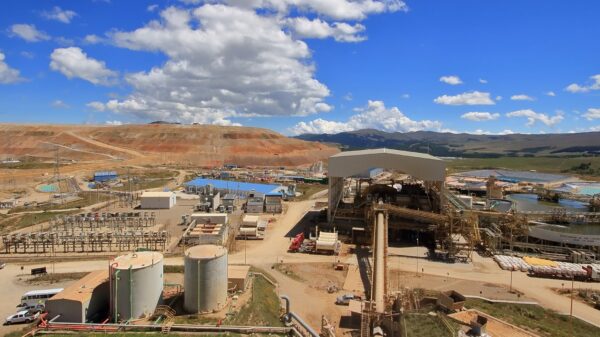Shoppers may begin to see price inflation at the pumps in the coming months thanks to the El Niño phenomenon.
Drought conditions around the Panama Canal have forced the Panama Canal Authority (ACP) to cut the number of ships using it for passage, which will impact global prices on multiple commodities including gasoline and ores and metals. On Thursday, authorities decided this after seeing the driest conditions since 1950.
Beginning November 3, the ACP will reduce the daily booking slots from the current 31 to 25 per day. This number will be further decreased to 18 slots per day starting in February 2024. In recent months, the ACP has implemented several passage restrictions to conserve limited water resources.
El Niño is a climate phenomenon characterized by warmer-than-average sea surface temperatures in the central and eastern tropical Pacific Ocean, which can lead to widespread climate and weather disruptions worldwide.
The ACP further notes that Gatun Lake, which relies on rainfall as its primary water source for the canal’s lock system, is experiencing an unprecedented decline in water levels at this time of year.
The canal authority reports that it operates the Panama Canal 24 hours a day, 365 days a year and that annually, between 13,000 and 14,000 ships utilize it to greatly reduce the time and distance for travel between the Atlantic and Pacific oceans.
Beginning November 3, the ACP will reduce the daily booking slots from the current 31 to 25 per day. This number will be further decreased to 18 slots per day starting in February 2024 over the next three months. In recent months, the ACP has implemented several passage restrictions to conserve limited water resources.
Read more: Where is the largest lithium deposit in North America?
Shipping charges may increase if drought persists
Gas isn’t the only commodity feeling the squeeze here.
The Panama Canal serves as a conduit for the transportation of various commodities, including canned and refrigerated foods, animal and vegetable oils and fats and ores and metals. These goods are necessary for global trade, enabling the movement of perishables, raw materials, and food products to meet demand and support industries.
The Panama Canal handles an estimated 5 per cent of international trade and 40 per cent of all U.S. container traffic. Recent restrictions have already caused China-U.S. spot shipping prices to surge by over 30 per cent. If the drought persists and further restrictions are imposed, shipping charges may increase even more as vessels are redirected through less efficient and costlier routes.
Additionally, logistical disruptions could revive global price pressures, especially for food and energy, as perishable items from South America and energy exports from the U.S. become stranded in the canal.
The drought is affecting international trade and causing shipping costs to surge.
This situation could potentially lead to price inflation on various consumer goods and create global supply chain challenges, particularly for food and energy products, as vessels face delays and rerouting through less efficient routes, impacting both producers and consumers worldwide.
This could also adversely effect the green shift towards sustainable materials as the production of items like lithium ion batteries would see spillover effects due to the raised cost of production, as companies like Albemarle Corporation (NYSE: ALB), Livent Corporation (NYSE: LTHM) and junior lithium miners like Lithium South Development Corporation (TSXV: LIS) (OTCQB: LISMF) (Frankfurt: OGPQ) are forced to factor in high distribution costs.
Read more: Lithium South Development expands production goals, updates PEA on Hombre Muerto lithium project
Read more: Lithium South Development updates leadership roster, appoints new director
Reduced crossings will produce economic challenge for Panama
Beyond the global economics effects, the effect of the canal blockage will also have effects on Panama and its domestic economy as the country heavily depends on the more than USD$4.6 billion in annual revenue generated by the canal.
This comes at a time of turmoil as in recent weeks, large protests erupted in the capital, Panama City. These protests targeted a substantial copper mine that contributes to approximately 4 percent of the gross domestic product. Following these protests, Panama announced its intention to hold a referendum on cancelling a First Quantum Minerals Ltd. (TSX: FM) contract to operate the site. Congress is expediting the necessary legislation to facilitate the vote.
Lithium South Development Corporation is a sponsor of Mugglehead News coverage
.














